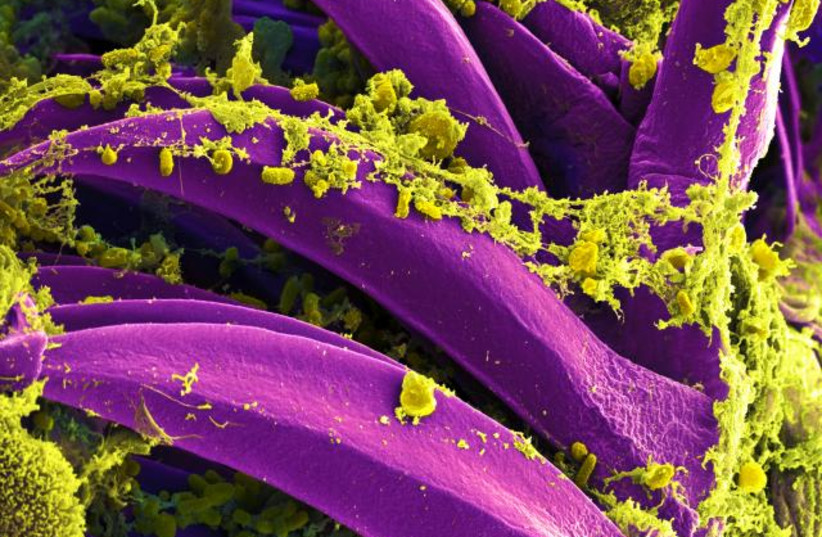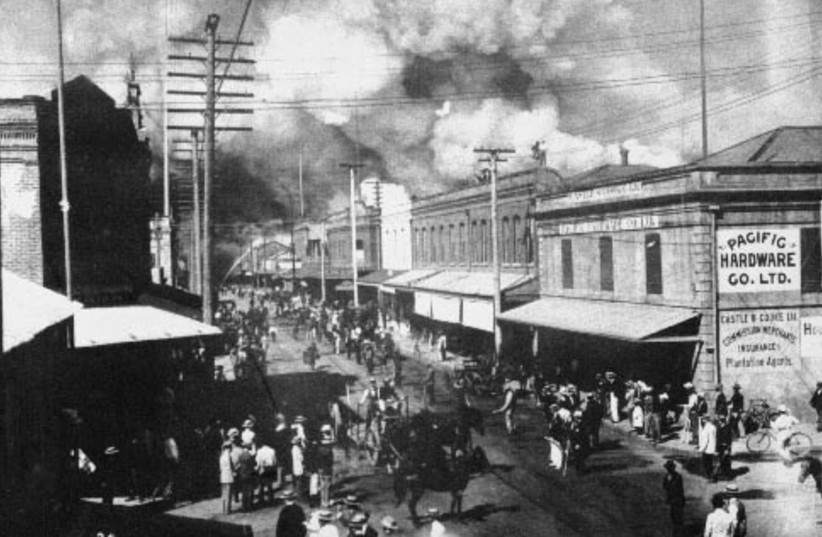February 7, 2023, marks 123 years since the first major epidemic of the bubonic plague in the continental US after cases broke out in San Francisco.
The plague epidemic lasted four years and resulted in at least 119 deaths.
Most notable, however, is the fact that the very existence of the epidemic was denied for over two years by the California governor, which resulted in the epidemic worsening and establishing a foothold in the US that has never been fully eradicated.
What is the bubonic plague?
The bubonic plague is one of the most infamous diseases in human history. While it has existed in some form for thousands of years, carried by the yersinia pestis bacteria spread by fleas, which are in turn are spread by rodents, the plague became most infamous in the Medieval era after it spread across Europe with several major pandemic waves such as the Black Death, and ultimately may have killed half of the entire European population at the time.
The disease never went away either, and by the late 1800s, cases had begun to resurge, albeit mostly in Asia.

The plague's origins are unknown, though despite evidence possibly pointing out that it may have existed 5,000 years ago in Latvia, it is most commonly associated with China.
There is some reason for this, given that many believe the infamous plague pandemics were started via rats coming from China.
This was also the case in the late 1800s due to another major worldwide bubonic plague outbreak known as the third plague pandemic, which began in Yunnan, China in 1855 and may have killed over 15 million people worldwide, with at least 10 million alone in India.
The bubonic plague and the US: Thinking San Franciso was "plague-proof"
But the plague wasn't native to the Americas. This meant that the US had never experienced a plague outbreak before.
That was, until 1899, when the plague was discovered spreading in Honolulu, Hawaii. There was so much panic about this that health officials decided to stop the spread of the disease by literally setting the houses of the infected on fire.
This would prove disastrous when winds spread the fire to burn nearly all of Honolulu's Chinatown.

This caused plague panic to spark in the US, especially in the bustling port of San Francisco.
Some ships that came from Asia to the US west coast, including San Francisco, had plague cases or plague deaths onboard, causing further concern among some officials that cases could spread into the city. However, others said that fears were pointless because there was no way San Francisco could ever have a plague pandemic, citing, among other things, a belief that a rice-based diet makes one vulnerable to the plague while meaty diets make one resistant. In fact, just three days before the plague outbreak began, the San Francisco Examiner ran an article describing how the city was "plague-proof."
The US plague epidemic begins
Chinese-American lumber yard owner Wong Chut King first developed symptoms on February 7, 1900, of what would later be determined to be the plague.
This would only be confirmed during an autopsy in March after he died in bed four weeks later.
Medical officials carried out numerous tests confirming that it was the bubonic plague and measures were initially taken to quarantine all 25,000-35,000 Chinatown residents. However, many other prominent officials, most notably then-California governor Henry Gage and San Francisco Jewish-American jeans magnate Levi Strauss, denied that there was any outbreak of the plague whatsoever.
Why did this cover-up happen? There are a few reasons but the most evident was an economic issue and a fear of a new type of science that studied microorganisms as evidence of diseases.
This cover-up entailed a concentrated effort to discredit Dr. Joseph J. Kinyoun, the head of San Francisco's Marine Hospital Service who has since gone on to become known as "the father of the National Institutes of Health" and who was the first to identify the plague. This included articles and speeches deriding his "plague fake."
But another issue in all of this was racism. For one thing, there was a belief among many that white people were simply immune to the plague at this point.
At first, very few white San Francisco residents were infected – Chinatown was hit the hardest. This further fueled another stereotype that Chinese immigrants were simply filthy and disease-ridden.
This was evident in the rhetoric at the time.
"[Chinese immigrants] are fortunate, with the unclean habits of their ******* and their filthy hovels, to remain within the corporate limits of any American city. In an economic sense, their presence has been, and is, a great injury to the working classes, and in a sanitary sense they are a constant menace to the public health,"
James Phelan
"[Chinese immigrants] are fortunate, with the unclean habits of their ******* and their filthy hovels, to remain within the corporate limits of any American city. In an economic sense, their presence has been, and is, a great injury to the working classes, and in a sanitary sense they are a constant menace to the public health," noted then-San Francisco mayor James Phelan.
For its part, Chinatown residents tried to hide plague victims in order to prevent any persecution and prevent a Chinatown-wide quarantine.
All of this fueled the pandemic and allowed it to worsen. And soon enough, word about the outbreak spread anyway, which only caused the plague denial to double down.
However, the mounting cases still caused officials to institute quarantine measures. These measures were made around racial lines, specifically targeting Asian immigrants, which caused the courts to strike them down.
This was also the case with an attempt by some officials to forcibly vaccinate all Chinese residents of San Francisco with an experimental anti-plague vaccine known for having severe side effects and for not being approved for human use.
Gage's continued denial of the plague pandemic eventually helped contribute to him losing his reelection bid in 1902. His successor, George Pardee, later managed to actually implement measures and the epidemic stopped in 1904.
"Racial scapegoating, blaming Asian people — whether it be for plague in Chinatown, San Francisco or COVID today — we see that that's resurfaced in a really tragic way, resulting in hate crimes and assaults on people."
Marilyn Chase
The plague pandemic's sickening legacy in the US
There were a few notable consequences of the San Francisco plague epidemic. For example, when a second epidemic hit the city in 1907, efforts were made quickly to fight it and eliminate it.
However, there were two especially notable elements of this event that define its legacy: The introduction of the plague to the US and the parallels with the COVID-19 pandemic over 100 years later.
Regarding the first, the denial of the plague epidemic for two years is believed by many to have allowed the bubonic plague to find sustainable vectors in the US, such as among prairie dogs and some squirrels.

As a result, while there previously had been no plague cases in American history, now the disease has remained permanently entrenched within the country.
As noted by the US Centers for Disease Control and Prevention (CDC), the plague in the US was introduced by rat-infested steamships in 1900, and there is an average of seven human plague cases per year in the country. The majority of cases occur in California, Arizona, New Mexico, Colorado, Nevada and Oregon.
From the Black Death to COVID-19: What's changed?
Regarding the COVID-19 pandemic, some parallels are especially evident.
Both cases saw some denial among government officials – coincidentally, both the Trump administration and Gage's governorship were in the Republican Party – which helped contribute to poor handling of the outbreak and arguably worsening conditions. Both also saw the attempted discrediting by these political figures of health officials, Kinyoun being slandered during the plague outbreak and Anthony Fauci being slandered amid COVID.
But the most notable parallel is that both disease outbreaks led to widespread discrimination against Asian Americans. Both outbreaks are widely believed to have originated in China and this led to considerable discrimination.
As noted by author Marilyn Chase in a TIME magazine report, "Racial scapegoating, blaming Asian people — whether it be for plague in Chinatown, San Francisco or COVID today — we see that that's resurfaced in a really tragic way, resulting in hate crimes and assaults on people."
